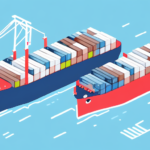Finding the Right Shipping Fulfillment Location for Your Business
Shipping and fulfillment can make or break an e-commerce business. You can have the best products, the best marketing campaign, and the best website design, but if your shipping and fulfillment process is subpar, your business will suffer. One key factor in ensuring a seamless shipping and fulfillment process is selecting the right location.
The Importance of Choosing the Right Shipping Fulfillment Location
Cost of Transportation, Taxes, Duties, and Regulations
When choosing a shipping fulfillment location, businesses must consider several factors, including the cost of transportation, taxes and duties, and regulatory requirements. Failing to give serious thought to these factors can lead to increased transportation costs, longer delivery timeframes, and potential legal and financial issues. These problems can ultimately hamper the growth and profitability of your business.
Proximity to Customers
The closer your fulfillment center is to your customers, the faster they will receive their orders, leading to increased customer satisfaction and loyalty. Additionally, having a fulfillment center in a strategic location can help you reach new markets and expand your customer base.
Analyzing Business Needs and Factors for Selection
Product Type, Size, Weight, and Demand
Before selecting a shipping fulfillment location, conduct a thorough analysis of your business needs. Consider the type of products you sell, their size and weight, and the demand for these products. Evaluating these aspects helps in determining the most efficient fulfillment location.
Shipping Volume and Delivery Timeframes
Assess your current and future shipping volumes and the required delivery timeframes. This analysis will help you understand the capacity you need from a fulfillment center and ensure timely deliveries to your customers.
Proximity to Suppliers or Manufacturers
Consider the proximity of your fulfillment location to your suppliers or manufacturers. Being closer reduces transportation costs, streamlines the production process, and helps maintain optimal inventory levels.
Shipping Carrier Options and Reliability
Evaluate the shipping carriers available in the potential location. Different carriers offer varying rates, delivery times, and service levels. Research and compare your options to choose the most reliable and cost-effective carriers.
Infrastructure and Technology
Ensure the chosen location has robust infrastructure and technology, including reliable internet and phone services, and quality transportation and logistics networks. Advanced technology can facilitate real-time inventory tracking and efficient order processing.
Evaluating Costs and Efficiency
Shipping Costs Breakdown
When evaluating shipping costs, consider elements like fuel surcharges, residential delivery fees, accessorial charges, and peak season surcharges. Understanding these components helps in accurately assessing total shipping expenses.
Delivery Timeframes
Assess the transit times and delivery timeframes for each potential location. Faster delivery times can enhance customer satisfaction and provide a competitive edge.
Transportation Management Systems
Utilize reputable transportation providers that offer online, cloud-based management systems. These systems provide real-time visibility into shipping costs, delivery times, and other critical metrics, aiding informed decision-making.
Special Handling for Products
Consider if your products require special handling or packaging, which can affect shipping costs and delivery times. For example, fragile items may need additional packaging materials and careful handling.
International Shipping Considerations
If you ship internationally, factor in additional documentation and customs clearance requirements. Working with experienced transportation providers can help navigate these complexities efficiently.
Fulfillment Provider Options
Pros and Cons of Using a Third-Party Fulfillment Provider
Third-party fulfillment providers offer access to a broader range of transportation options, cost savings, and increased transparency into the shipping process. They bring expertise in handling logistics, allowing businesses to focus on core operations. However, drawbacks include less control over the shipping process, limited personalization, and potential communication delays.
Benefits of Partnering with a Local Fulfillment Center
Local fulfillment centers provide faster delivery times, reduced transportation costs, a more personalized customer experience, and a lower environmental impact. They also offer better insight into local regulations and efficient routing for local deliveries. Partnering locally can strengthen community ties and support the local economy.
Legal, Tax, and Regulatory Considerations
Regulatory Requirements and Compliance
Each location has its own regulatory requirements. Ensure compliance with all local regulations to avoid legal issues and penalties. This includes understanding shipping laws, labor regulations, and environmental standards.
Tax Implications
Research the tax implications of your chosen location. Different regions may have varying tax rates and incentives that can impact your overall costs and profitability.
Availability of Skilled Labor
Ensure the location has a sufficient pool of skilled labor, especially if your business requires specialized skills in areas like manufacturing or technology. This can enhance operational efficiency and reduce the risk of costly mistakes or delays.
Negotiating and Selecting the Best Location
Best Practices for Negotiating Shipping Rates
Negotiating shipping rates is crucial for cost management. Partner with providers that offer cloud-based transportation management systems to analyze shipping costs effectively. Leverage competitive bidding and highlight your business as a valuable customer to secure better deals.
Testing Multiple Locations
Test multiple shipping locations by shipping products to different areas and evaluating the costs and timeframes. This hands-on approach helps determine the most efficient and cost-effective location for your business needs.
Common Mistakes to Avoid
Avoid common mistakes such as overlooking critical factors like scalability, leading to future relocation challenges. Ensure the chosen location can accommodate your current and projected business growth without significant disruptions.
Monitoring and Optimizing Fulfillment Operations
Tracking and Analyzing Performance Metrics
Regularly track and analyze performance metrics such as order accuracy, on-time delivery rates, and customer feedback. Monitoring these metrics ensures your fulfillment provider meets your standards and helps identify areas for improvement.
In conclusion, selecting the right shipping fulfillment location for your business requires careful consideration of various factors, including costs, infrastructure, proximity to customers and suppliers, and regulatory compliance. By following best practices and avoiding common pitfalls, you can optimize your shipping and logistics processes for growth and profitability.




















